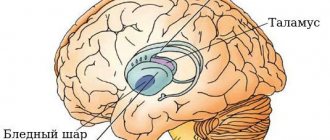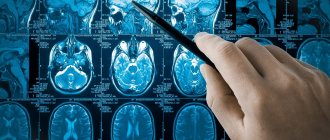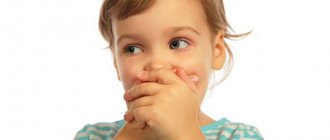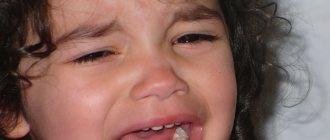Theoretical foundations of speech therapy. Principles and methods of speech therapy
Speech therapy is based on the following basic principles: systematicity, complexity, development principle, consideration of speech disorders in connection with other aspects of the child’s mental development, activity approach, ontogenetic principle, principle of taking into account etiology and mechanisms (etiopathogenetic principle), principle of taking into account the symptoms of the disorder and the structure of the speech defect , the principle of a workaround, general didactic and other principles.
Let's look at some of them. The principle of systematicity is based on the idea of speech as a complex functional system, the structural components of which are in close interaction. In this regard, the study of speech, the process of its development and correction of disorders involves influencing all components, all aspects of the speech functional system.
For a speech therapy conclusion, for the differential diagnosis of similar forms of speech disorders , a correlation analysis of speech and non-speech symptoms, data from a medical, psychological, speech therapy examination, correlation of the levels of development of cognitive activity and speech, the state of speech and the characteristics of the sensorimotor development of the child are necessary.
Speech disorders in many cases are included in the syndrome of nervous and neuropsychiatric diseases (for example, dysarthria, alalia, stuttering, etc.). Elimination of speech disorders in these cases should be comprehensive, medical, psychological and pedagogical in nature. , the principle of complexity is important . In the process of studying speech disorders and their correction, it is important to take into account the general and specific patterns of development of abnormal children.
The principle of development involves identifying in the process of speech therapy work those tasks, difficulties, and stages that are in the zone of proximal development of the child. The study of children with speech disorders, as well as the organization of speech therapy work with them, is carried out taking into account the child’s leading activities (subject-practical, playful, educational).
The development of a methodology for correctional speech therapy is carried out taking into account the sequence of appearance of the forms and functions of speech, as well as the types of activities of the child in ontogenesis ( ontogenetic principle ).
The occurrence of speech disorders in many cases is due to a complex interaction of biological and social factors. For successful speech therapy correction of speech disorders, it is of great importance to establish in each individual case the etiology, mechanisms, symptoms of the disorder, identification of leading disorders, and the relationship between speech and non-speech symptoms in the structure of the defect.
In the process of compensating for impaired speech and non-speech functions and restructuring the activity of functional systems, the principle of a workaround is used, i.e., the formation of a new functional system bypassing the affected link. An important place in the study and correction of speech disorders is occupied by didactic principles : clarity, accessibility, awareness, individual approach, etc.
The methods of speech therapy as a science can be divided into several groups. The first group is organizational methods: comparative, longitudinal (study over time), complex.
The second group consists of empirical methods: observational (observation), experimental (laboratory, natural, formative or psychological-pedagogical experiment), psychodiagnostic (tests, standardized and projective, questionnaires, conversations, interviews), praximetric examples of activity analysis, including speech activities, biographical (collection and analysis of anamnestic data).
The third group includes quantitative (mathematical-statistical) and qualitative analysis of the data obtained; machine data processing using a computer is used.
The fourth group is interpretive methods, methods of theoretical study of connections between the phenomena being studied (the connection between parts and the whole, between individual parameters and the phenomenon as a whole, between functions and personality, etc.).
Technical means are widely used to ensure the objectivity of the study: intonographs, spectographs, nasometers, video speech, phonographs, spirometers and other equipment, as well as X-ray cine photography, glottography, cinematography, electromyography, which make it possible to study the dynamics of integral speech activity and its individual components.
History of origin
The first mention of the correction of speech abilities appeared in the 17th century. The deaf pedagogy of that time did not take into account people who were hard of hearing or were completely deaf.
Speech therapy emerged as an independent discipline towards the end of the 19th century. Until the first half of the 20th century, science was in a simplified form. Speech defects were considered as signs of insufficient formation or disorder in the functioning of the articulatory apparatus. Diagnostic measures were carried out from a medical point of view.
After a series of research works, the scientific direction of speech therapy received a broader meaning. They began to connect her directly with pedagogy.
Modern speech therapy has the same general principles as defectology. You can find out more about defectology here. In addition, it is closely related to other sciences (psychology, linguistics, physiology).
The most important etiological factors for speech disorders
1) Genetic factors.
2) Exogenous - organic factors: infections, injuries, intoxications.
A) perinatal (intrauterine) pathology: a) immunological incompatibility of the blood of mother and fetus - specific disorders of the sound pronunciation side of speech in combination with hearing impairment; b) intrauterine brain lesions - severe speech disorders combined with other polymorphic developmental defects; c) intracranial hemorrhages – speech impairment of cortical origin (alalia); when brain damage is localized in the area of structures that provide the speech motor mechanism of speech - dysarthria.
B) natal (birth) pathology – asphyxia and birth trauma;
B) postnatal pathology
The etiological factors causing speech impairment are complex and polymorphic. Most often, there is a combination of hereditary predisposition, unfavorable environment and damage or disruption of brain maturation under the influence of various unfavorable factors.
Conceptual and categorical apparatus of speech therapy
From the point of view of communication theory, speech disorder is a violation of verbal communication. The relationships that objectively exist between the individual and society and are manifested in verbal communication are upset. Speech disorders are characterized by the following features:
1) inappropriate for the speaker’s age;
2) not being dialecticisms, illiteracy of speech and expression of ignorance of the language;
3) associated with deviations in the functioning of the psychophysiological mechanisms of speech;
4) of a stable nature, not disappearing on their own, but becoming established;
5) requiring a certain speech therapy intervention depending on their nature;
6) often having a negative impact on the further mental development of the child.
A distinction is made between the concepts of “speech underdevelopment” and “speech impairment”.
Underdevelopment of speech implies a qualitatively lower level of formation of a particular speech function or the speech system as a whole.
A speech disorder is a disorder, a deviation from the norm in the process of functioning of the mechanisms of speech activity. For example, with underdevelopment of the grammatical structure of speech, there is a lower level of assimilation of the morphological system of the language and the syntactic structure of the sentence. Violation of the grammatical structure of speech is characterized by its abnormal formation and the presence of agrammatisms.
General speech underdevelopment is a form of speech anomaly in which the formation of all components of speech is impaired. The concept of “general speech underdevelopment” presupposes the presence of symptoms of immaturity (or developmental delay) of all components of the speech system (phonetic-phonemic side, lexical composition, grammatical structure). General speech underdevelopment may have a different mechanism and, accordingly, a different structure of the defect.
Delayed speech development is a slowdown in the rate at which the level of speech development does not correspond to the age of the child.
“Speech decay” is the loss of existing speech and communication skills due to local or diffuse brain damage.
The structure of a speech defect is a set of speech and non-speech symptoms of a given speech disorder and the nature of their connections. In the structure of a speech defect, there is a primary, leading disorder (core) and secondary defects, which are in a cause-and-effect relationship with the first ones, as well as systemic consequences. The different structure of a speech defect is reflected in a certain ratio of primary and secondary symptoms and largely determines the specifics of targeted speech therapy intervention.
Correction of speech disorders is the correction or weakening of the symptoms of speech disorders.
Restorative learning is the correction of speech resulting from local brain damage.
Classifications of speech disorders
Currently, there are two classifications of speech disorders in circulation in domestic speech therapy: 1) clinical and pedagogical; 2) psychological-pedagogical. These two classifications do not contradict, but complement each other, since they are focused on solving different problems. ICD-10 uses a clinical classification of speech disorders.
• Clinical and pedagogical classification
It differs from the medical classification in that the types of speech disorders are not strictly tied to the forms of the disease. It is focused mainly on the correction of speech defects, on the development of a differentiated approach to overcoming them and is aimed at the utmost detail of the types and forms of speech disorders. The clinical and pedagogical classification identifies criteria that make it possible to imagine what is impaired in speech, and on the basis of this to distinguish one speech disorder from another:
1) violation of the form of speech (oral or written);
Some main points of the “Great Didactics of Comenius”
For your information, we present some provisions of the three chapters of Comenius’s “Great Didactics” (the text, with the exception of the chapter titles, is not original).
From Chapter 16 (General requirements for teaching and learning, i.e. how to teach and learn)
The first principle reads:
- Human education must begin in childhood
- The most productive hours for studying are the morning hours
- Everything that is to be studied should be distributed based on age characteristics (see the first lesson) - at a certain age, only what is accessible to the student’s perception at the moment can be studied
The second principle reads:
- All training materials must be prepared in advance
- The mind must develop earlier and faster than the tongue
- Real educational subjects should be the basis of formal
- Examples should serve as the basis for rules
The fourth principle states:
- The order in schools should be established in such a way that students study only one subject at a time
The sixth principle reads:
- Young people who need to be educated must first receive the general educational basics - the educational material must be distributed so that there is nothing new in the new classes, but some development is provided for the knowledge that has already been acquired
- Any sciences and languages should initially be taught through the simplest elements in order for students to develop a general understanding of them as a whole
The seventh principle reads:
- The entire range of training sessions must be accurately divided into classes so that what has been learned is the basis of what has not been learned.
- Study time must be distributed in the most precise way, so that each study hour, day, month and year has its own specific work.
From Chapter 17 (Fundamentals of Ease of Learning and Learning)
The first principle reads:
- Youth education should start early
- The same student in the same subject can only be taught by the same teacher
- If the teacher thinks so, then, first of all, the student’s morals should be harmonized
The second principle reads:
- In children we must strive with all our might to affirm the indomitable desire to know and learn.
- Educational methods should facilitate the learning process so that it does not give rise to dissatisfaction and aversion to subsequent learning in students
The third principle reads:
- Any of the sciences must be enclosed in the most concise, but most accurate rules
- Any rule must be stated in a minimum of the clearest words
- Any of the rules should be provided with as many examples as possible in order to show the variety of its application.
From Chapter 18 (Fundamentals of Strength in Teaching and Learning)
The main provisions of the chapter are as follows:
- The greatest attention should be paid only to things that can be useful
- Any subsequent information must be based on the previous one
- Any knowledge must be consolidated through exercises
- Any information should be studied sequentially, and attention should be focused on one thing
- Each subject must be studied until it is fully understood
If we summarize the essence of all the principles of didactics and Comenius’ requirements for training and education, we can say that for teachers and people in one way or another associated with pedagogical activities (managers, trainers, consultants, etc.) those guiding principles that allow you to competently, efficiently and effectively build the educational process. Pedagogical activities should be based on them.
In the next lesson of our pedagogy training, we will talk about the relationship between pedagogy and psychology, as well as the psychological foundations of learning.
Critical periods in speech development
There are three critical periods in the development of speech function:
• I critical period (1–2 years of life) – the formation of the prerequisites for speech and the beginning of speech development. During this period, the foundations of communicative behavior are formed and the need for communication becomes its driving force. At this age, the most intensive development of speech zones occurs, in particular Broca's area; the critical period of its development is considered to be the child's age of 14–18 months. Any, sometimes even minor, unfavorable factors can affect the development of a child’s speech.
• II critical period (3 years) – intensive development of coherent speech, transition from situational to contextual speech. At this age, there is a mismatch between the neuroendocrine and central nervous systems, which leads to behavioral changes in the form of stubbornness and negativism. All this determines the great vulnerability of the speech system. In the second critical period, stuttering, mutism, and delayed speech development may occur. The child may refuse to communicate and show protest reactions to the demands of adults.
• III critical period (6–7 years) – the beginning of the development of written speech. Increased load on the child’s central nervous system. If the demands are too high, stuttering may occur.
Critical periods of speech development play the role of predisposing conditions; they can have either independent significance or be combined with other unfavorable factors - genetic, diseases or dysfunction of the central nervous system.
Exercises for correcting defects in speech therapy
Classes with a speech therapist are aimed at developing the child’s articulatory apparatus and respiratory system.
Respiratory exercises teach you to breathe correctly through your nose and mouth, and also train you to hold your breath for a few seconds.
So that the activities do not tire the children, they are performed in a playful way. For example, the game "Ships". Its essence is that the child blows air on the boat, which is in the water, pushing it towards the edge of the container. There are a huge number of such games in speech therapy.
Gymnastics of the articulatory apparatus consists of the following:
- warming up the lower jaw;
- warming up the cheeks;
- warming up the lips;
- tongue exercise
; - charging for the sky.
Exercises are carried out in poetic form using facial expressions. Focusing on which sounds come first and the correct stress in words.





